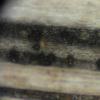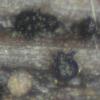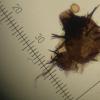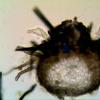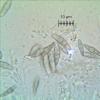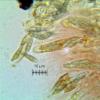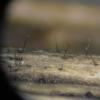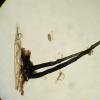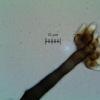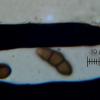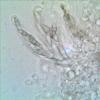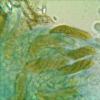
21-12-2025 09:32
Hello.A tiny ascomycete found embedded in wood in

21-12-2025 21:32
Pol DebaenstHello, Garden, Burgweg 19, Veurne, BelgiumOn 10/1

22-12-2025 23:38
Patrice TANCHAUDBonsoir, récolte sur un mur en pierre, apothéci

22-12-2025 00:47
Patrice TANCHAUDBonsoir, récolte à proximité du milieu dunaire

21-12-2025 21:40
Isabelle CharissouBonjour, j'aimerais connaitre les références de

20-12-2025 23:08
Patrice TANCHAUDBonsoir, récolte sur sol sablonneux dans l'arri�
 Hi everybody,
Hi everybody,first of all I wish you all a Happy New Year 2016.
I found this species on moist lying cirsium-stalks. 0,15 mm diam. Around the neck covered with thickwalled, brown setae up to 62 x 5 µm. Ascospores 13-16 x 3,5-4 µm, second cell enlarged, hyaline, 3-septate, Asci 50 x 9, biseriate, IKI negative with 8 spores. There is an anamorphe on the same stalk, 260 x 11 µm, septate, Conidia 18-19 x 6,5-7, brown, 3-septate and verruculose.
Regards, Maren

as for any pyrenomycete s. l. the first thing to check is whether asci are uni- or bitunicate. They seem to be bitunicate on photo 6. Are ascospores hyaline or greyish as suggested on your photos?
I think of a Capronia but let's wait for Gernot's opinion.
Cheers,
Jacques

this is clearly Capronia. Did you test in KOH+IKI? It should change blue.
I think its near C. pilosella.
regards,
björn

thank you very much, it is indeed a Capronia species, the asci are bitunicate, the ascospores are grey, not hyaline, how I first thought. After KOH-treatment changes the colour to blue with IKI.
I think it could be C. pilosella.
Thanks a lot
Regards, Maren

